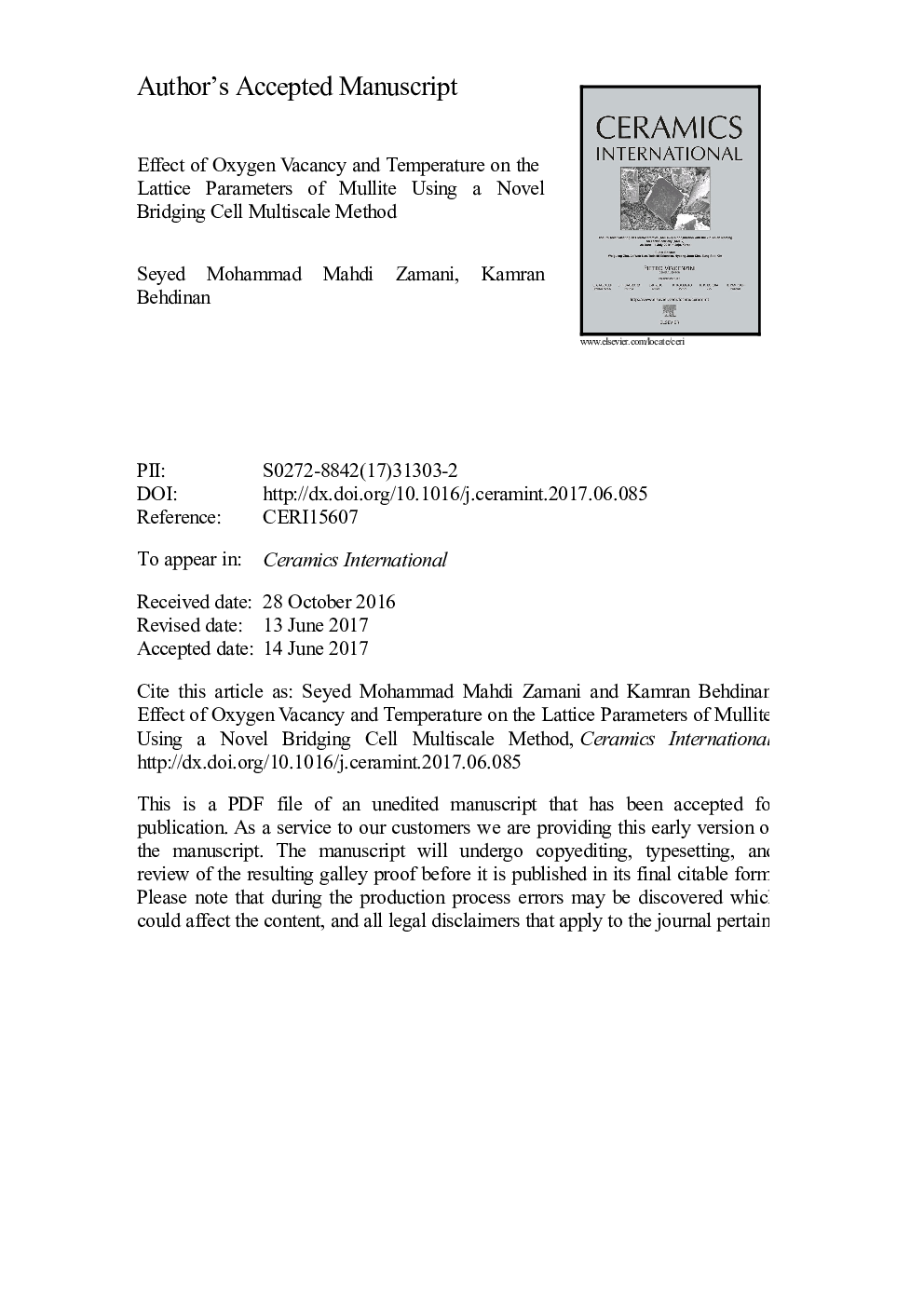| Article ID | Journal | Published Year | Pages | File Type |
|---|---|---|---|---|
| 5437522 | Ceramics International | 2017 | 35 Pages |
Abstract
This study applied a novel Bridging Cell Method (BCM) multiscale modeling technique to identify the internal energy and lattice parameter variations of mullite with respect to the oxygen vacancy content of its structure, at temperatures ranging from 300Â K to 1500Â K. The BCM model decomposed the system into three domains: continuum, bridging, and atomistic. Temperature-dependent numerical calculations were then applied to solve the systems of equations. Next, the supercells of mullite were generated by removing oxygen atoms from a silimanite crystal structure and replacing the Si with Al atoms. Such replacements occurred in the atomistic domain where interatomic and temperature-dependent potential functions were used to obtain the internal energy and lattice parameter variations of the mullite family as a function of the structure's temperature and oxygen vacancy. The results were validated at different temperatures via applicable experimental data previously reported in the literature. At all temperatures, the results indicate a linear relationship between the internal energy/cell of mullite and the oxygen vacancy factor. Lattice parameter a was found to linearly increase as the oxygen vacancy increased, whereas the b and c lattice parameters nonlinearly reduced or increased, respectively. Furthermore, in all cases, a temperature elevation led to a linear increase in the lattice parameter since the thermal expansion coefficient was found to be positive in all three directions. The results indicated that the main origin of lattice parameter fluctuations in the mullite family is the rotation of the structure around the c-axis, which is attributable to the removed oxygen atoms hence, there is a longer bond length of Al-O as compared to Si-O. Additionally, the thermal properties of mullite including variations in the internal energy and lattice parameter fluctuations with respect to temperature, are independent of the composition. This validated BCM mullite model can be used for structural analysis at higher temperatures.
Related Topics
Physical Sciences and Engineering
Materials Science
Ceramics and Composites
Authors
Seyed Mohammad Mahdi Zamani, Kamran Behdinan,
